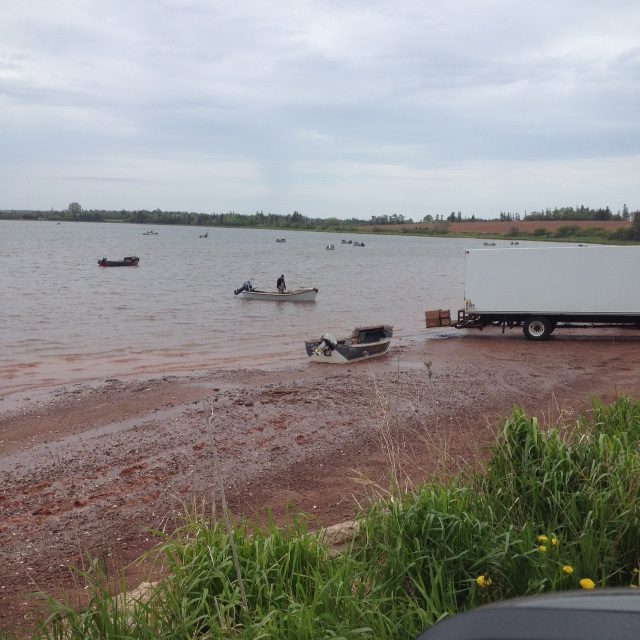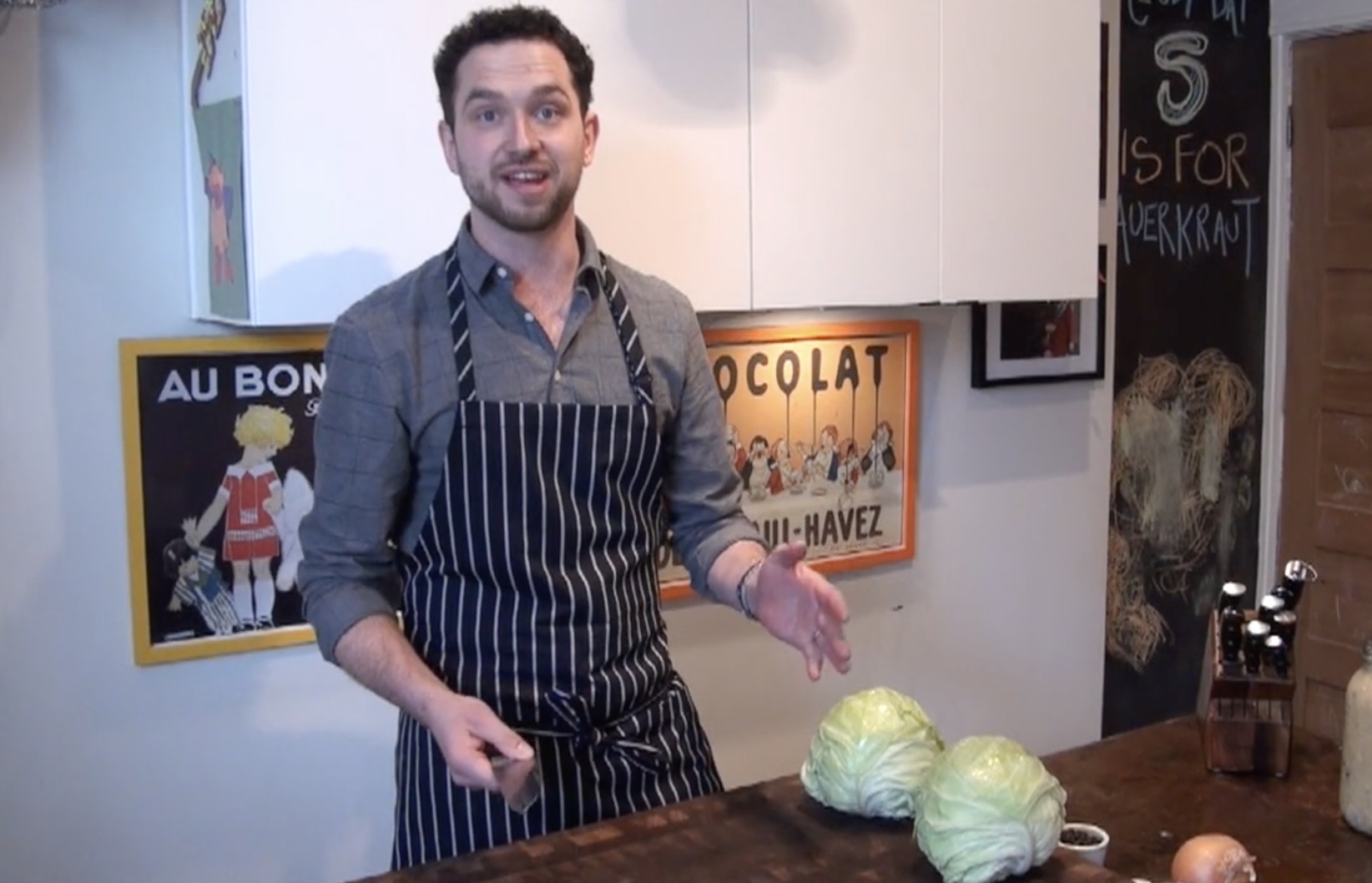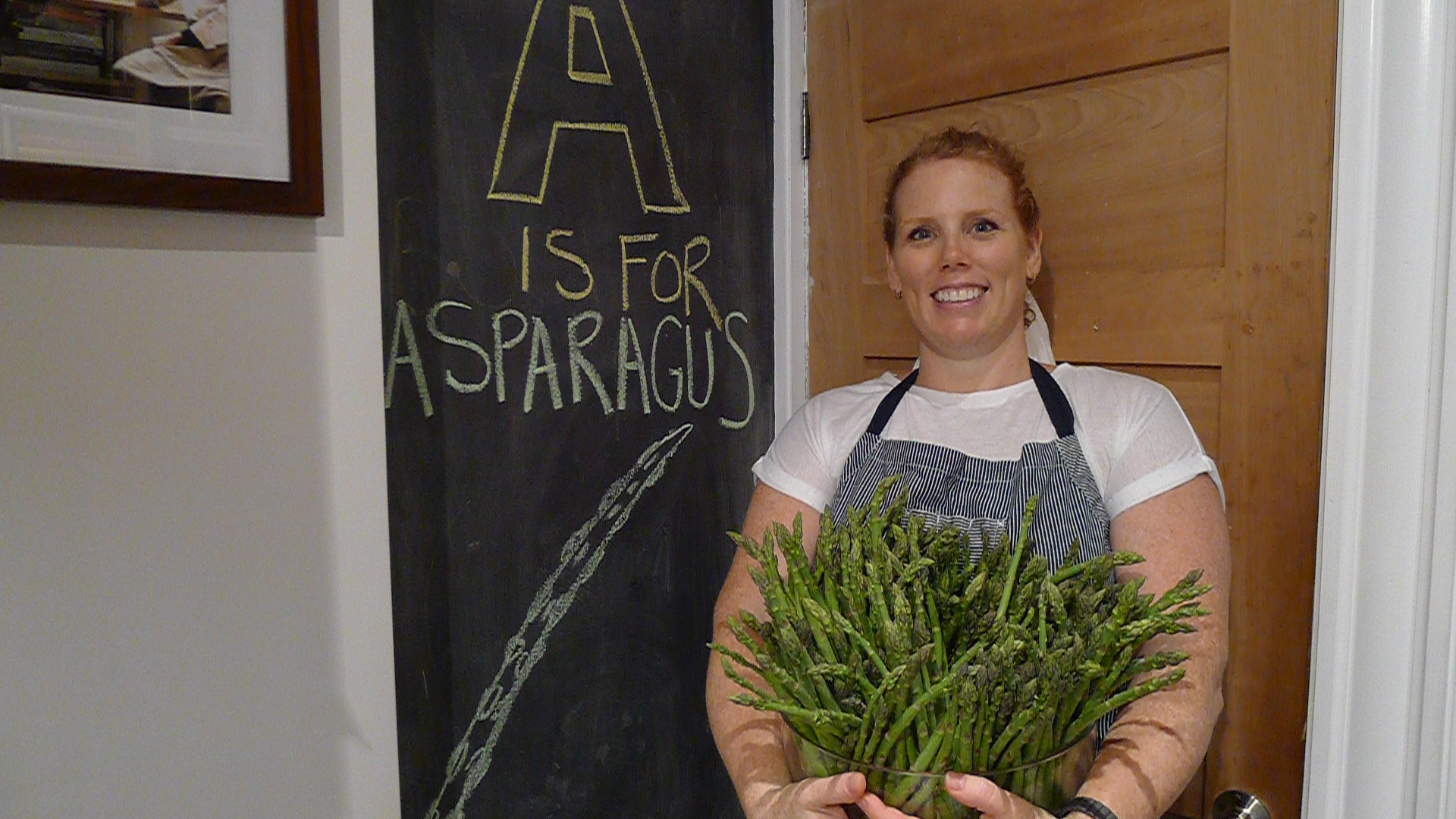FROM SHORE TO OYSTER BOY
Oyster Boy’s Premium Malpeques are the créme-de-la-créme of Prince Edward Island’s public fishery oyster harvest.
Oyster Boy’s Malpeques are exclusively from the public fishery, mainly from Bedeque Bay, at the mouth of the Dunk river, on the west side of the island, about four km south of the town of Summerside. During any given day in the spring or fall it is common to see dozens upon dozens of small one man boats, traditional flat-bottomed dories, harvesting the public beds with long wooden oyster tongs.
These fishermen will typically harvest four to eight wooden boxes of oysters a day, each containing between 300 – 400 oysters. These boxes are interestingly around the same volume as the wooden barrels that used to be used to transport oysters from the island in times past. At the end of their day the fishermen drive up to Howard’s Cove Shellfish, a shipper and packer, located on the Conway Narrows. It’s a quick 45 minute journey, with their boxes of oysters in the back of their ½ tonne trucks. At Howard’s Cove the fishermen pull in and present their catch to our friends Randy and Jason, who price and purchase the oysters on sight. The oysters are transported to the waters of Frederick’s Cove in the Conway Narrows where they are “relayed” (read: finished) for around 10 – 12 days before being sorted and graded by shape and size, with undersized oysters placed back in the water to continue to grow.
Howard’s Cove process thousands of oysters a day, but save the best even-shaped oysters for us at Oyster Boy. As the saying goes “the keenest buyer gets the best”, and the Oysters that meet our exacting standards make up a mere 5% of the harvest of the public fishery.
These select Malpeques are then packed in our Oyster Boy boxes, and picked up by our shipper who drives them in a refrigerated or reefer, via the Confederation bridge, to Moncton on the mainland, New Brunswick. There the shipment is consolidated with our other Atlantic orders.
This reefer is then driven west, through Montreal, to our home on Queen Street West, in Toronto. The entire grade/sort/ship process from shore-to-table takes around three days, and this takes place twice a week, ensuring that our oysters are in premium condition when they get to our customers.
THE COMPLEX (AND OFTEN CONFUSING) HISTORY OF THE MALPEQUE OYSTER
The harvesting of oysters in Malpeque Bay goes back thousands of years to the time when they provided a food supply for the Mi’kmaq that called Malpeque, PEI their summer home.
The Malpeque oyster gets its name from Malpeque Bay (née Richmond Bay) in the north of the island, one of the original “cru” oyster fishing areas of PEI. The name Malpeque is derived from the Mik`maq word meaning “big water”, with Malpeque being the Acadian adaptation of the word. The species is Crassotrea Virginica, as are all east coast oysters,
Folklore has it that the reputation of the Malpeque “brand” was established when oysters bearing the Malpeque name somewhere upon their packaging/documentation were pronounced the “World’s Best Oysters!” at the Paris World Fair in 1900. However the oysters of that small parcel in the northeast corner of Richmond Bay, to the west of what is now known as Cabot Provincial Park, had been considered one of better oyster fishing sites in PEI for a long time before this.
In his book The Canadian Oyster (1909), author and scientist Dr. Joseph Stafford of the Biological Board of Canada mentions the Malpeque oyster as some of the finest coming out of PEI.
In 1915 a disease wiped out the greater majority of the oyster population in PEI’s waters. Confusingly this disease was given the name “Malpeque Disease”, as the oysters in the waters of Malpeque Bay were least affected by the disease, due to their inherent resistance to the malady. Although many thought that this disease heralded the death knell for the island’s oyster fishing, the resistant oysters, and resultant spat (read: oyster larvae attached to a surface), from this area were used to reseed the rest of the oyster beds on PEI, and were a foundational component in replenishing the devastated and often overfished oyster stocks of not only PEI, but the entire Maritimes.
Over the decades the PEI government has played a crucial role in the establishment of the name Malpeque as a brand, declaring that all producers should call their oysters Malpeques, and providing cardboard boxes stamped with the Malpeque designation to assist with the promotion of the name. The government has also invested considerable capital reseeding the public fisheries of PEI.
Today Malpeque is a term that can refer to any oysters fished from PEI waters, but more specifically oysters that come from the public fishery. This public fishery is to varying degrees regulated and subsidised by both the Federal and Provincial governments. The beds can be naturally occurring, privately seeded, or transferred into the leases from the public fishery. As previously mentioned, Oyster Boy chooses to exclusively source their Malpeques from the public fisheries.
GEOGRAPHICAL DISTRIBUTION
Malpeques can be harvested from any body of water in PEI.
APPEARANCE
Partly due to their varied catchment area, Malpeques can be highly variable in appearance. Their physical shells vary in shape and size depending on the growing area bottom. The Malpeque oyster has a clean, characteristically “east coast” tough, outer shell, while the meat on the inside is firm and full. Its shell colour can range, from whitish-grey, light-brown, and green, but this is also dependant upon their growing grounds, nutrients, and vegetation present, as well as available food supply, time of year, and water temperature, which all play a vital role in the growth and shape of the oyster.
Malpeques are graded into three main categories:
Standard : Rough shells with a slender shape and a shallow cup. Shell colours vary through green, brown, blonde, white or even black
Choice : Smoother shells with a width greater than ⅓ its length and a deeper cup. Shell colours again are variable, but green is preferred
Fancy : These are the “unicorns”, with smooth shells and a width over ½ its length with deep cups. Again green is preferred, but this is not as important as the shape.
Within these categories the oysters are then sub-categorized into Small, Medium, Large or occasionally Jumbo.
TASTE AND TEXTURE
As with all oysters, the flavour and appearance of Malpeques changes broadly throughout the year in response to the oyster’s life cycle. It also changes from day to day, and week to week from natural variables such as weather and tidal flows.
The taste of Malpeques can vary from bay to bay, or estuary to estuary, geographic location, and food supply of the water body. The flavour is mostly dependent upon the conditions that were present in their growing area at the time of harvest.
The PEI Malpeque oyster is characterized by a clean, salty taste that finishes sweet ; This is a profile typical the Gulf of Saint Lawrence. The Malpeque becomes arguably even more succulent when the temperature drops. This is because as the ocean cools, the oyster’s adductor muscle, which holds the shell together, grows stronger, adding a little bit of sweetness to the taste and crunch to the texture. The Malpeque is also at its plumpest right when the cold weather hits, having filtered up to 189 litres of water a day whilst feeding on plankton until the waters drops to four degrees Celsius.
SOME PERFECT PAIRINGS
Anytime: A dry white such as Vinho Verde, Picpoul, Muscadet or a Brut Champagne
Summertime: A lager-style beer with a fruity finish or a dry rosé wine
Winter: A stout style beer
Shuck U
Oyster Boy offers an entertaining and informative two hour program that teaches everything you have to know about buying, shucking, and presenting oysters.
An expert oyster shucker will lecture for the first hour on subjects such as; how oysters are grown, how they breed, the life cycle of an oyster, and seasonal variations. In the second hour of Shuck U the professor and assistant will demonstrate how to properly shuck and present an oyster. Students are given 18 oysters and their very own oyster shucking knife and then start practising!
Anyone may sign up for Shuck U; individuals, couples, threesomes! We conduct classes of up to 12 students at a cost of $55 per person on weekend afternoons from 12 noon to 2 pm.
Shuck U is in session all year long. We do take a break from mid March to mid May (spring is truly the cruelest time for oysters), and another from mid July to mid September (breeding time for Canadian oysters). Please email Professor Adam for available dates.
Shuck U always starts at noon, so don’t be late!












